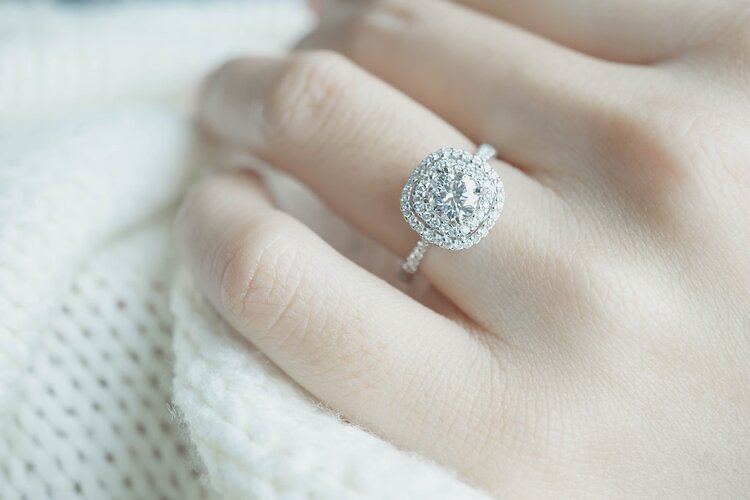
The October Birthstone, Opal, is known for its unique display of dancing colors whenever it catches the light.
What is October's Birthstone?
Opal! The name opal is thought to be derived from the Sanskrit upala, meaning "precious stone," and later the Greek derivative "Opallios," meaning "to see a change of color". This iridescent stone truly displays the full spectrum of hues, from a glimmering white to an encompassing rainbow.
Surprisingly, October is one of the few months to have two birthstones. Tourmaline, a silica variant, comes in a range of hues; the most common is a clear green that's reminiscent of Emeralds.
What is Opal?
Opal is a translucent to transparent semi-precious gemstone, the shimmering milky to pearly iridescence of opal has captivated jewelry lovers for centuries. It is most well-known for its milky white to pearly pastel shades, which dance with rainbow like colors as the tone is viewed from different angles.
Origin and History
Opal is formed from a solution of silicon dioxide and water. As water seeps through sandstone, it picks up tiny particles of silica. Millions of years ago, the solution flowed into cracks and voids in sedimentary as well as volcanic areas inland Australia. Estimates suggest this solution had a rate of deposition of approximately one centimeter thickness every five million years at a depth of forty meters. Over a period of approximately 1 to 2 million years after this period solidification occurred as the climate changed. The opal therefore remained soft and uncemented for long periods before becoming hardened.
Opal Symbolism and Meaning
Opals are said to symbolize amplification, higher hope and divine purity. In ancient times the opal was a stone of fidelity and assurance, and was often worn as an amusement, to bring about loyalty and faithfulness.
Opals Color and Appearance
Opals come in a wide range of colors, from white to black. The most popular color is white, followed by black. Black opals are the rarest and most valuable type of opal. Opals typically have a milky base color with flashing reflections of other colors. These “flashes” are what give opals their unique sparkling appearance.

Why does Opal display color?
Opal is a gemstone composed of amorphous silica and water. Its structure is a lattice of silica layers containing stacked layers. These stacked layers are of the perfect composition to catch and diffract light into a rainbow like shimmer that characterizes opal.
Visible light can’t penetrate the full width of an opal’s dense structure. Along the way, it hits the various silica layers and splits into a spectrum of colors. An opal’s fire is called opalescence. … Opal’s fire is graded on a scale of 1 to 5, with 5 being the brightest.
What are Fire Opals?
Fire opals are opaline in structure, but with very different color characteristics. They aren’t milky white like their more well-known counterparts; rather, they take their name from their warm hue, which can be anywhere in the range of yellow, orange, or red. At certain angles, they may flash green.
How are Opal's cut?
Other gemstones sparkle thanks to the angle shapes they’re cut into. Opals, however, are rounded and polished externally in order to display their impressive internal facets. Every precious stone is singular, but opal jewelry is unique on a whole different level. With every movement, opals flash different colors. It’s a truly dynamic gemstone.
As for how opals are mounted, there are three popular choices: solid opal, doublet, and triplet.
- Solid opal: This is natural opal that’s cut and polished to reveal its natural opalescence. The highest quality opals are cut solid. All of Barrington Jewels opal jewelry is set with solid opals.
- Doublet: Two layers – an upper slice of rounded opal and a black backing. The dark back serves to brighten the opal’s natural coloring
- Triplet: Three layers – a black backing, a middle slice of flat opal, and a rounded upper layer of glass. The black backing brightens the opal’s colors, and the upper layer of glass serves to protect the opal’s soft surface.
How to Care for Opals?
Solid opal should be cleaned gently with mild detergent in warm water and a soft toothbrush or cloth. Avoid bleach, chemicals and cleaners. Doublets & triplets may be wiped with a damp soft cloth and mild detergent, but should never be soaked or immersed.
Never allow anyone to clean your opal in an ultrasonic cleaner, as the intense vibrations may cause cracking in a solid opal, and water penetration in a doublet or triplet.
If your stone loses its shine or becomes scratched, bring it back to an opal cutter. After years of wear, small scratches and scuff marks cause an opal to lose its shiny polish and become dull looking. Professional polishing can bring new life to an opal which has become dull or scratched, and we can also check for claw damage and ensure the security of the setting.


